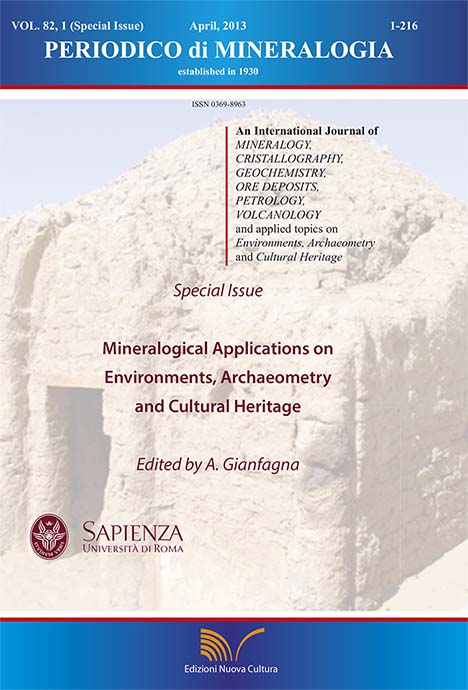Geochemical characteristics of Kanigorgeh ferruginous bauxite horizon, West-Azarbaidjan province, NW Iran
DOI:
https://doi.org/10.2451/2013PM0001Keywords:
Bauxite, Parent rock, Mass changes, Elemental distribution, Kanigorgeh, Iran.Abstract
Ferruginous bauxite horizon of Kanigorgeh is located ~ 20 km northeast of Bukan, West- Azarbaidjan province, northwest Iran. The horizon is a part of the Irano-Himalayan karst bauxite belt that was developed in a form of 8 discontinuous stratified layers and lenses varying in thicknesses (5-17 m) with extending over 3.2 km along the contact of Permian carbonates, Triassic dolomites. In this study, parental affinity and controlling factors of elements distribution in the bauxite ores are surveyed by applying analytical mineralogy, mass and volume changes calculations (method of isocon), elemental ratios, and correlation coefficients. Mineralogical analyses reveal that diaspore, hematite, and kaolinite are the major minerals in the ores with lesser and variable amounts of boehmite, goethite, muscovite-illite, rutile, and montmorillonite. In contrast to the presence of diasporic-boehmitic mineralogical composition in ores, the geochemical data (i.e., ratios of Pb/Y, Ga/Pb, Zr/Pb, and Cr/Ni), testify to gibbsitic composition for the original aluminum hydroxides. Microscopic studies and geochemical characteristics of major and trace elements indicate that the ores were formed authigenically by the alteration and weathering of basaltic parent rocks. Mass change calculations suggests that enrichment of many elements in the ores resulted by losing Si, Ca, K, Na, Mg, and P during weathering of plagioclase, K-feldspar, ferromagnesians, and apatite. In addition, variable amounts of Co, Sr, and Ba were lost during bauxitization. Geochemical considerations prove that distribution of major, minor, trace, and rare earth elements in the studied ores were principally controlled by factors such as cation exchanges, adsorption, increasing of pH in weathering solutions due to buffering by carbonate bedrocks, scavenging by Fe-oxides and hydroxides, isomorphic substitutions, co-precipitation, and differences in stability of primary minerals.


